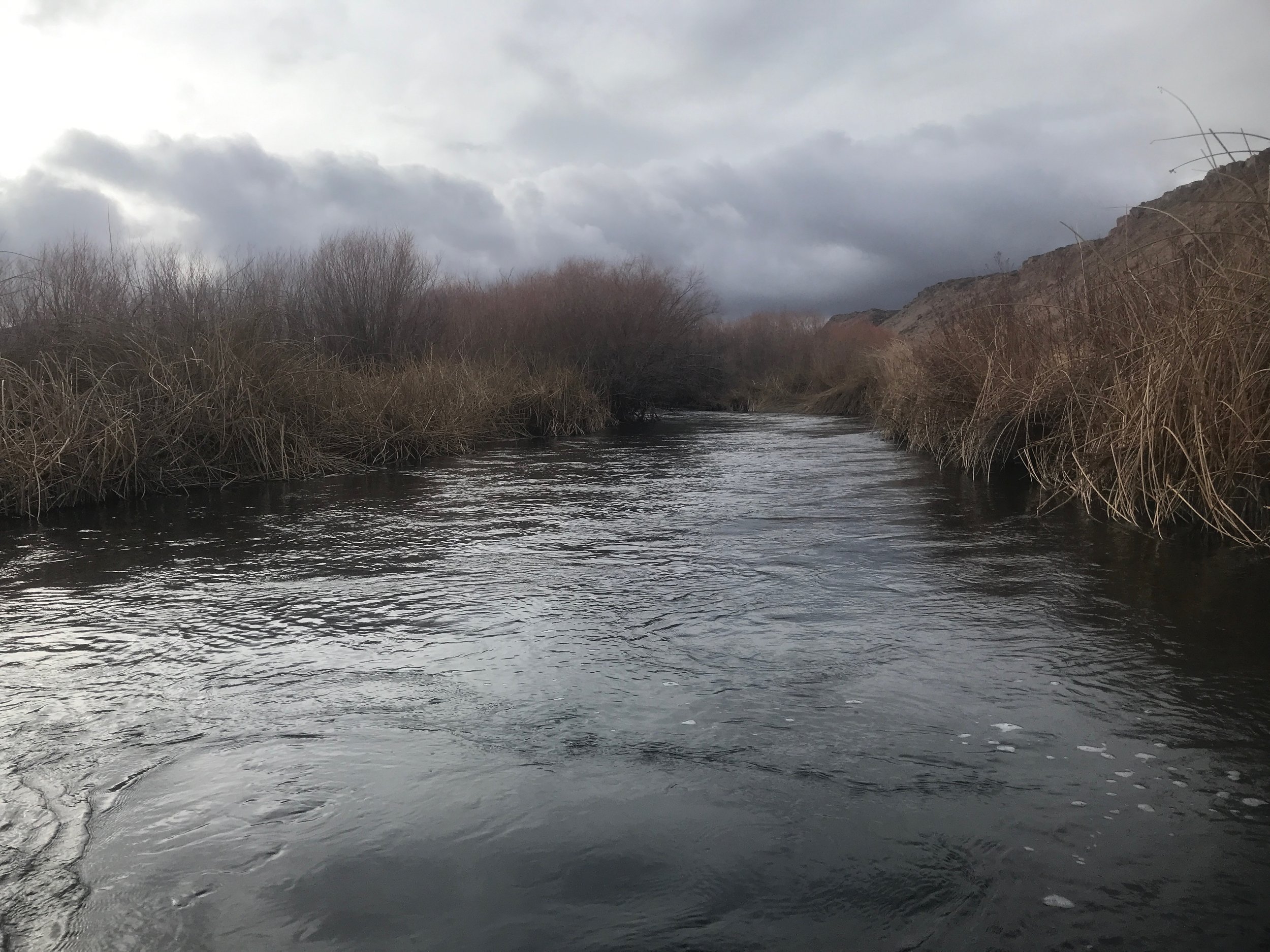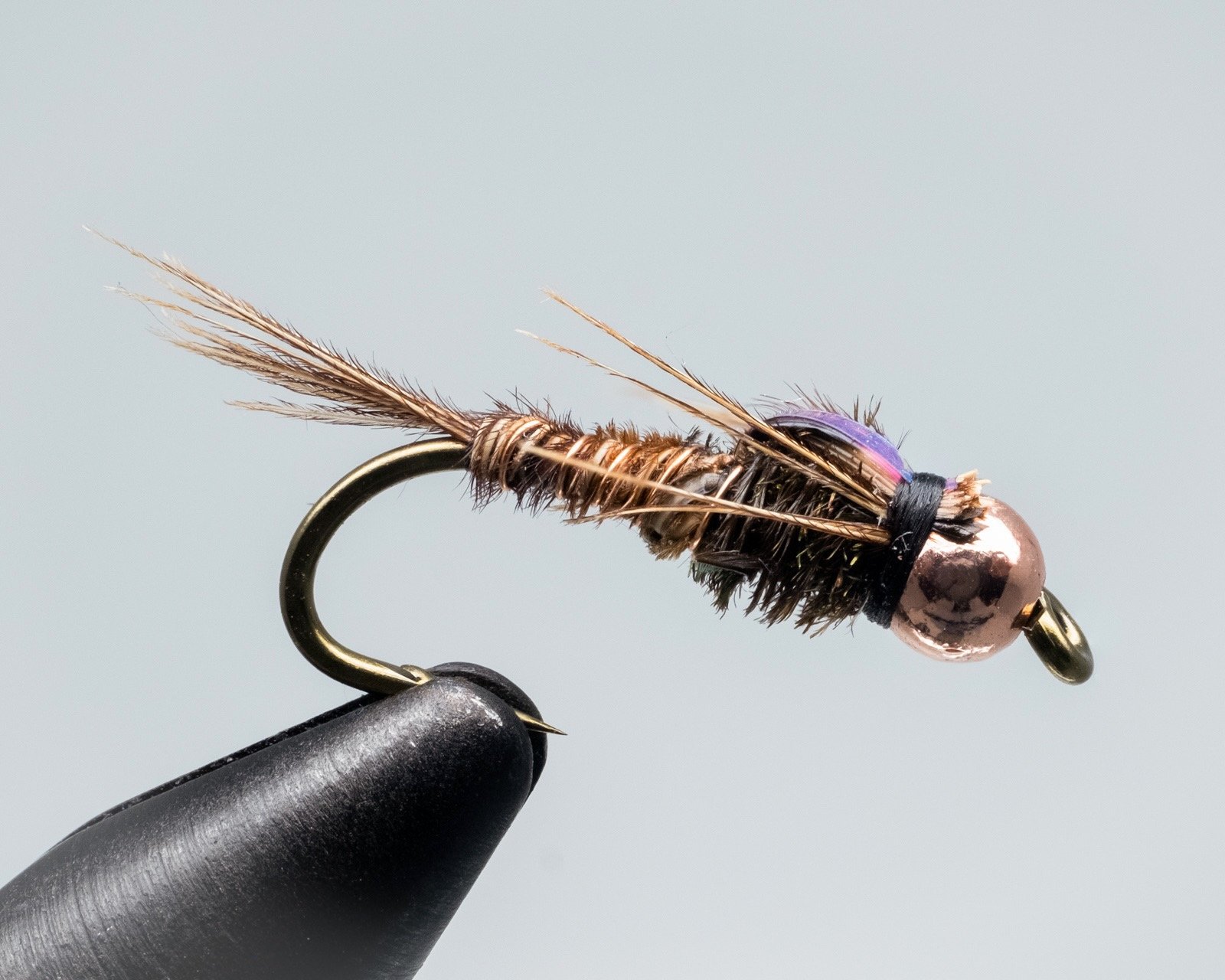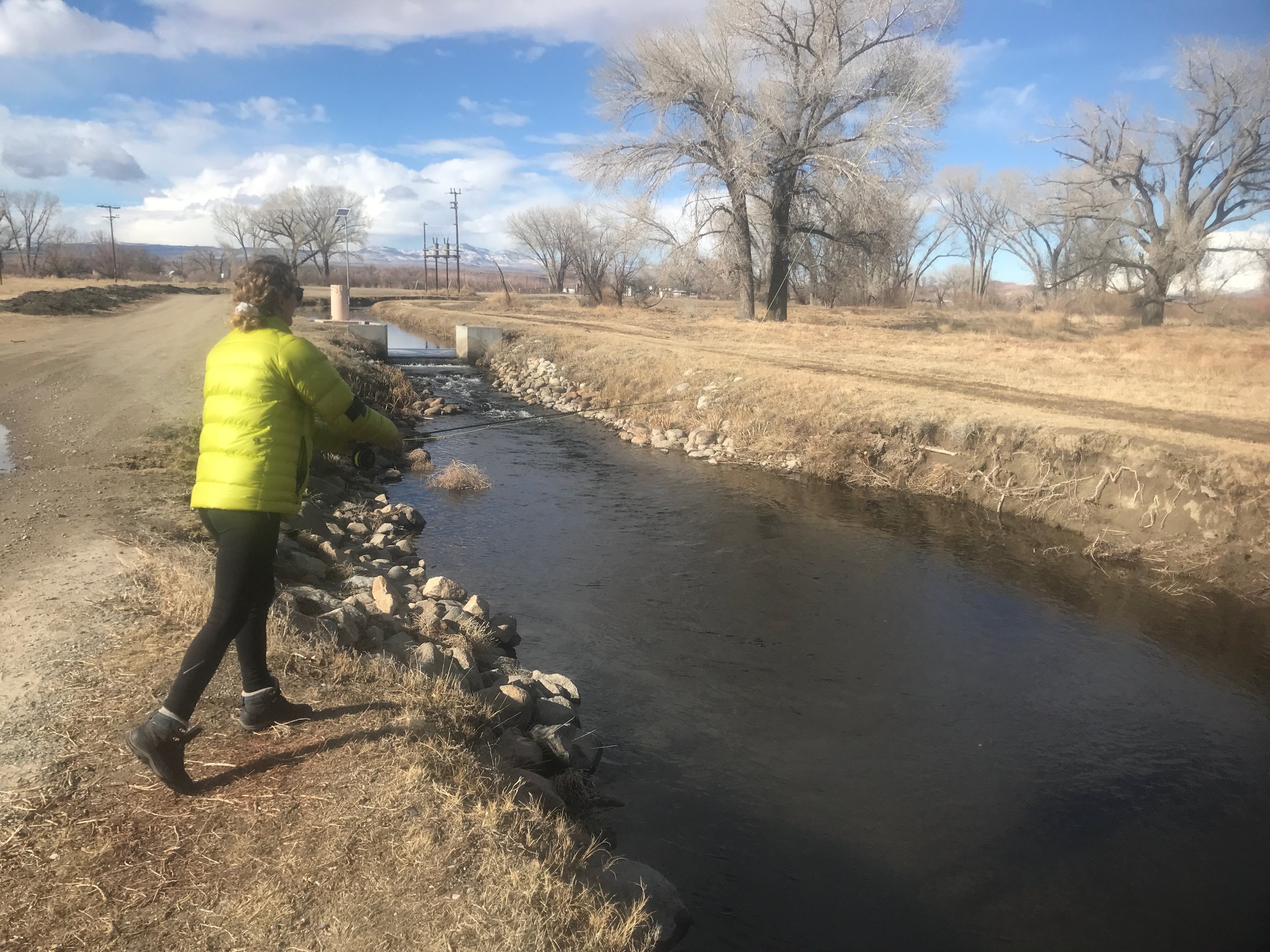High elevations got snow and the Owens Valley got rain. This is a good start to a winter snow pack that will get us enough water to get through next summer. We are heading into a warming dry period. Nymphing is the best method for catching trout in the Eastern Sierra right now. Dry fly activities are just starting up as midges and mayflies are beginning to hatch.
The best part of a storm is when the sun comes out and the mountains have a new blanket of snow.
Lower Owens River
Wild Trout Section:
The river is safe to wade giving fly fishers access to areas unavailable at high flows. Nymphing under an indicator or with a Euro rod is producing fish with tiger midges, zebra midges, bead head flash back pheasant tail nymphs, olive quilldigons, hot spot pheasant tail nymphs and stoner nymphs. Trout are starting to feed on hatching blue wing olive mayflies. The hatches have been sporadic, but will grow in intensity as winter progresses. Adams parachutes, blue wing olive parachutes, olive sparkle duns and olive comparaduns are fooling the few rising trout. The hatch has been later in the day taking place from noon tell three in the afternoon.
Cloudy days can be great days to fly fish dries when the blue wing olive mayflies are hatching..
Hot Creek
Interpretive Site:
Snow on the ground is not keeping anglers from driving up to the interpretive site to fly fish. Nymphs continue to be the most productive method of fly fishing the creek. Midges is the number one food source for trout in the winter months. Fishing with tiger midges, zebra midges, brassies and soft hackle brassies are all good imitations of midges to fish with in Hot Creek. There is a good population of blue wing olive nymphs in the creek and fly fishers will have good luck fishing with bead head flash back pheasant tails, olive WD40’s, olive quilldigons and hot spot pheasant tail nymphs.
A size 18 bead head flash back pheasant tail nymph is a perfect imitation of the blue wing olive nymphs that are abundant in Hot Creek. Photo by Chris Cargo..
Hot Creek
Canyon Section:
Fly fishers walking into the canyon need to watch out for ice on the trail. It’s easy to find you self-sliding down the trail on the ice that forms from the snow after the storms. Don’t expect the snow to last very long in the canyon. Fly fishing with nymphs continues to be the most productive method of fly fishing in the canyon section. Midge and mayfly nymphs are the insects the trout are feeding on in the winter time. Key to success is putting lots of casts into the water making sure your fly ends up bouncing on the substrate right in front of the trout’s nose. Bead head flash back pheasant tails, olive WD40’s, olive quilldigons and hot spot pheasant tail nymphs are the patterns that imitate the blue wing olive nymphs. Tiger midges, zebra midges, brassies and soft hackle brassies are the patterns that imitate the midge nymphs and midge pupae.
Trophy rainbow trout are spread out on the upper Owens River from Benton Crossing Bridge to Longyears..
Upper Owens River
Above Benton Crossing Bridge:
The snow accumulation in Long Valley is minimal with vehicles still able to access the roads going into the upper Owens River. Drive with caution as getting stuck on the dirt roads accessing the upper Owens River is no fun. I think by next week all the snow will be gone and it will be back to driving right in on the dirt roads with no snow worries. Trophy rainbow trout are in the system from Benton Crossing Bridge to Longyears. The trout are in the deep holes, deep runs and cutbanks resting and feeding on their upstream migration. To find the trout fly fishers need to cover lots of water. When fly fishing the waters occupied by the trophy rainbow trout fly fishers need to thoroughly cover the water with 50 to 100 casts. Fishing flies that the angler has confidence in will produce more trout. The fly patterns that have been working on the upper Owens River are stoner nymphs, green/gold wire Prince nymphs, Richard’s gold ribbed hare’s ear variation, tungsten eggs, squirmy wormies and San Juan worms.
Taught Katie Mayo how to fly fish today on Bishop Creek Canal even though the water is clear and extremely low .
Bishop Creek Canal
Behind the Old Ford Dealer:
Low water and spooky trout make fly fishing the canal tough right now. If you can find spots with a concentration of trout and make an approach without spooking the fish you will catch fish. Nymphing with stoner nymphs, olive quilldigons, hot spot pheasant tail nymphs, bead head flashback pheasant tail nymphs, tiger midges and zebra midges are the fly patterns that are producing trout.





